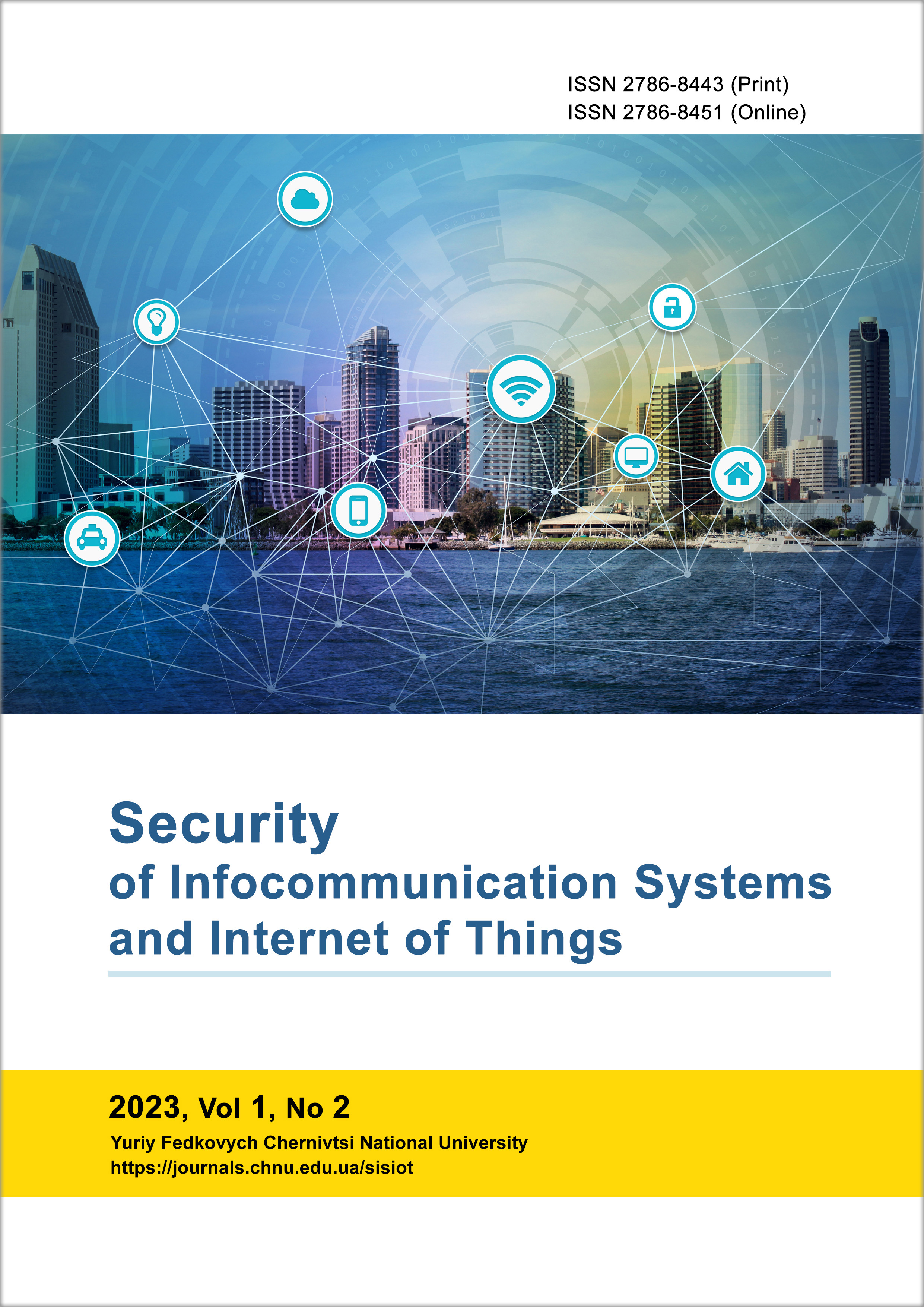Periodicity of Timeseries Generated by Logistic Map. Part I
DOI:
https://doi.org/10.31861/sisiot2023.2.02010Keywords:
periodicity, timeseries, logistic mapAbstract
In the paper, the periodicity of pseudo-chaotic implementations in fixed-point calculations is studied using the example of a logistic equation. It was established that with 32-bit represented numbers (three bits - the whole part, 29 bits - the fractional part), the maximum length of the observed cycle is L_(max )< 2^14 iterations, and the space of possible states of the chaotic system after the completion of the transition process is limited S≈2^14 different numbers. Histograms of the duration of transient processes preceding the exit of the trajectory into a cyclic orbit are constructed. It was found that the maximum durations of the transition process do not exceed (2Lmax, 4Lmax). The paper also demonstrates and substantiates the expediency of using a dynamic threshold when forming binary sequences based on chaotic numbers using the threshold method. It is shown that the criterion for the balance of the binary representation of chaotic sequences enables the optimal choice of the number of high-order bits that must be discarded in order to obtain a uniform distribution. Approaches to increase the cyclicity of period of digital implementations of chaotic systems are analyzed. It is shown that the period of the external disturbance must be coordinated with the durations of the cycles observed in the chaotic system. The results of the work show the limitations of chaotic systems, which must be correctly taken into account when using them in cryptography.
Downloads
References
Sato A., Endo Т. Experiments of Secure Communications Via Chaotic Syncronization of Phase-Locked Loops // IEEE Trans Fundamental. Vol E78-A, No 10, Oct, 1995.p.l286-1290.
Yuan G. Collapsing of chaos in one dimensional maps / G. Yuan, J.A. Yorke // Physica D: Nonlinear Phenomena. – 2000. - №136. – pp. 18-30.
Fei Yu, Lixiang Li, Qiang Tang, Shuo Cai, Yun Song, and Quan Xu, “A Survey on True Random Number Generators Based on Chaos”, Discrete Dynamics in Nature and Society, Vol. 2019, A. ID 2545123, 2019.
Hans Thunberg, “Periodicity versus Chaos in One-Dimensional Dynamics”, SIAM Review, vol. 43(1), pp. 3-30, 2001.
M. Joglekar, E. Ott, James A. Yorke, “Scaling of Chaos versus Periodicity: How Certain is it that an Attractor is Chaotic?”, Phys. Rev. Lett., vol. 113(8), p. 084101(4), 2014.
M. Sobottka, Luiz P. L. de Oliveira. “Periodicity and Predictability in Chaotic Systems.” The American Mathematical Monthly 113(5), pp. 415–24, 2006.
Ljupco Kocarev Chaos-Based Cryptography Theory, Algorithms and Applications / L. Kocarev, S. Lian. Berlin: Springer-Verlag Berlin Heidelberg, 2011. - 397 pp.
May, R. Simple mathematical models with very complicated dynamics. Nature 261, 459–467 (1976).
Alvarez G. Some basic cryptographic requirements for chaos-based cryptosystems / G. Alvarez, Li S.J. // International Journal of Bifurcation and Chaos. – 2006. - 16 (8). - pp. 2129-2151.
Zhang Xuefeng Extended Logistic Chaotic Sequence and Its Performance Analysis / Zhang Xuefeng, Fan Jiulun // Tsinghua science and technology. – 2007. - Volume 12, Number S1. - pp156-161.
Haliuk, S.; Krulikovskyi, O.; Vovchuk, D.; Corinto, F. Memristive Structure-Based Chaotic System for PRNG. Symmetry 2022, 14, 68.
Harris Bernard Probability Distributions Related to Random Mappings / Bernard Harris // Ann. Math. Statist. – 1960. - Volume 31, Number 4. pp. 1045-1062.
Haliuk, Serhii, et al. "Circuit implementation of Lozi ring-coupled map." 2017 4th International Scientific-Practical Conference Problems of Infocommunications. Science and Technology (PIC S&T). IEEE, 2017.
Harris Bernard Probability Distributions Related to Random Mappings / Bernard Harris // Ann. Math. Statist. – 1960. - Volume 31, Number 4. pp. 1045-1062.
Celso Grebogi Roundoff-induced periodicity and the correlation dimension of chaotic attractors / Celso Grebogi, Edward Ott, and James A. Yorke // Phys. Rev. – 1988. - A 38, 3688.
Published
Issue
Section
License
Copyright (c) 2023 Security of Infocommunication Systems and Internet of Things

This work is licensed under a Creative Commons Attribution 4.0 International License.









